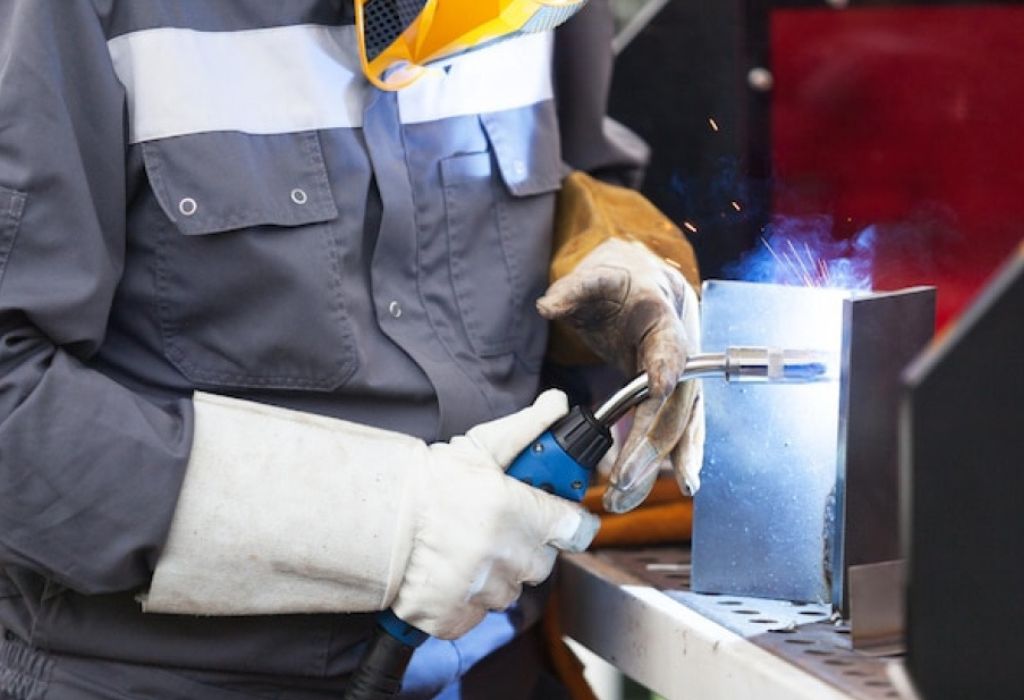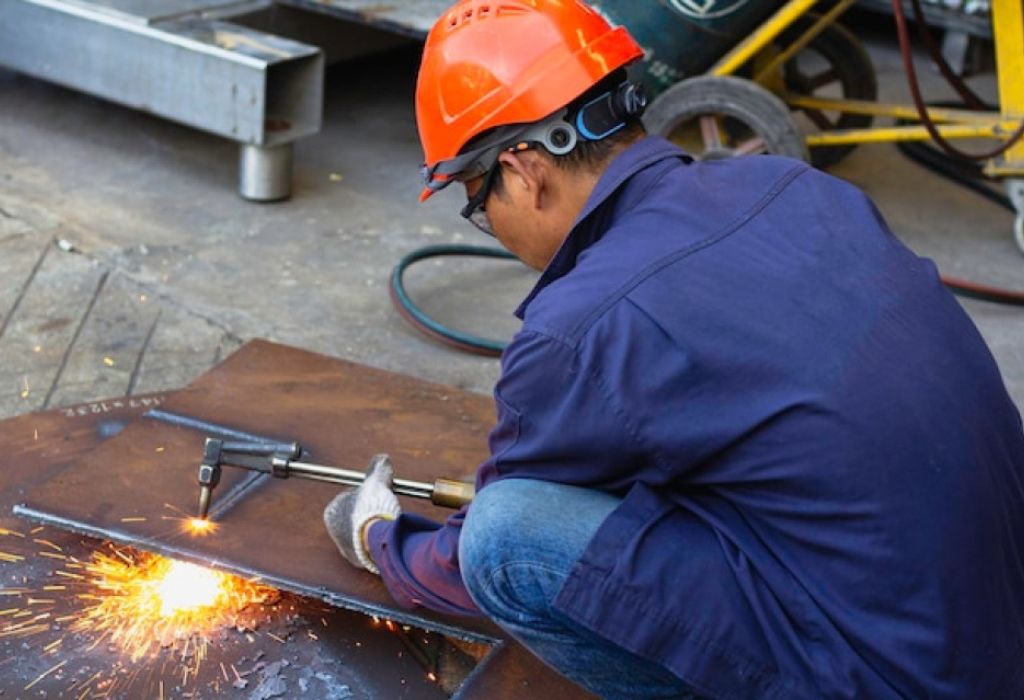Every welded structure, from skyscrapers to oil pipelines, depends on the accuracy of welds that hold them together. A single overlooked defect can lead to costly failures, safety risks, or even tragic accidents.
Many welders aspire to move into inspection, but the path can seem overwhelming. Questions arise about prerequisites, exam difficulty, and whether certification is truly worth the effort.
The demand for inspectors continues to rise. According to the U.S. Bureau of Labor Statistics, jobs in welding and related inspection fields are projected to grow by 2 percent through 2032 (BLS.gov). At the same time, reports show that many candidates fail at least one part of the CWI exam on their first attempt, with pass rates hovering between 40–60 percent (Reddit).
Becoming a certified welder inspector requires more than just welding experience. It calls for formal training, in-depth knowledge of codes, and the ability to spot even the smallest imperfections.
This guide explains step-by-step how to become a certified welder inspector. From eligibility requirements and exam preparation to career benefits and future trends, each section provides actionable insights to help readers succeed.
What Is a Certified Welder Inspector?

A certified welder inspector is a professional responsible for ensuring welds meet strict safety and quality standards. Their work protects infrastructure, equipment, and people by verifying that every joint complies with applicable codes.
Certification proves the inspector has both technical knowledge and practical skills to evaluate welds. This role is recognized globally across industries such as construction, oil and gas, shipbuilding, and power generation.
Inspectors use visual examination and nondestructive testing methods to detect cracks, porosity, or other weld discontinuities. They also review welding procedure specifications, monitor work processes, and provide documentation required for compliance.
Beyond inspection, certified professionals act as the bridge between welders and engineers. Their decisions often determine whether a project proceeds, rework is required, or a structure is declared unsafe.
Q: What does a certified welder inspector do?
A: They examine welds, confirm code compliance, detect defects, and document inspection results.
Q: What inspection methods are commonly used?
A: Visual inspection, ultrasonic testing, radiographic testing, magnetic particle, and dye penetrant.
Q: Why is certification important for welding inspectors?
A: Certification validates competence, builds credibility, and is often required by employers and contracts.
Q: Where are certified welding inspectors employed?
A: They work in sectors like oil and gas, aerospace, construction, manufacturing, and power generation.
Q: Do inspectors only perform visual checks?
A: No, they also use nondestructive testing methods to assess weld quality without damaging the structure.
Prerequisites & Eligibility Requirements
Eligibility depends on a combination of education, work experience, and physical requirements. Each certification body sets its own standards, but AWS CWI is the most recognized globally.
Applicants can qualify with varying levels of education, provided they meet the matching years of welding experience. For example, a high school diploma typically requires at least five years of relevant work.
The AWS also offers the Certified Associate Welding Inspector (CAWI) level for those with less experience. This serves as a stepping stone to full certification while gaining industry exposure.
All candidates must pass a vision test to ensure accurate inspection capabilities. Visual acuity is mandatory and may be corrected with glasses or contact lenses.
Q: What education level is needed to sit for CWI?
A: From 8th grade upward, but less education requires more years of welding experience.
Q: How many years of work experience are required?
A: Five years with high school, or fewer if holding a technical degree in welding or engineering.
Q: Can candidates apply without full experience?
A: Yes, through the CAWI route, which transitions into CWI once requirements are met.
Q: Is a vision test required?
A: Yes, near vision such as Jaeger J1 is required, corrected or uncorrected.
Q: Do different countries have different eligibility rules?
A: Yes, schemes like CSWIP (UK), CWB (Canada), and PCN (Europe) set their own prerequisites.
Step-by-Step Path to Certification
The journey to certification follows a structured path. Each step builds the foundation for the next stage.
Step 1: Formal Training
Welding technology courses and vocational schools provide essential theory. Specialized prep seminars also prepare candidates for exams.
Step 2: Accumulate Work Experience
Hands-on welding and fabrication work is essential for building inspection knowledge. Documented experience in multiple processes strengthens applications.
Step 3: Submit Application
Candidates must apply to AWS or the relevant body. Required documents include transcripts, proof of experience, and vision test results.
Step 4: Study and Prepare
Preparation involves code books, practice exams, and seminars. Candidates often select a code focus such as AWS D1.1 or API 1104.
Step 5: Take the Exam
The exam has three parts: Fundamentals, Practical, and Code. Passing requires a solid grasp of welding theory, hands-on inspection, and code navigation.
Step 6: Renewal & Recertification
Certification is valid for three years and renewable up to nine. Inspectors may advance to Senior Certified Welding Inspector (SCWI) after meeting advanced criteria.
Q: What are the three parts of the CWI exam?
A: Fundamentals, Practical, and Code Book sections.
Q: How long does the exam last?
A: About six hours total.
Q: What happens if you fail one section?
A: Candidates may retake only the failed part.
Q: How often is recertification required?
A: Every three years, with full recertification after nine.
Q: What higher levels exist after CWI?
A: Senior Certified Welding Inspector (SCWI) is the next level.
Study Tips, Resources & Tools
Preparation is critical to passing the certification exam. Many candidates struggle due to poor study strategies or lack of practice.
Start with official AWS Body of Knowledge resources. Combine them with structured prep courses and mock exams for stronger results.
Practical study includes mastering code navigation. Practice locating information quickly within standards like AWS D1.1 and ASME B31.3.
Mentorship under experienced inspectors provides real-world insight. Many professionals recommend shadowing CWIs before attempting the exam.
Q: Which code books are most common?
A: AWS D1.1, API 1104, and ASME B31.3.
Q: How many practice questions should be completed?
A: Hundreds to thousands, depending on exam readiness.
Q: Is mentorship necessary?
A: Not mandatory but highly valuable for practical knowledge.
Q: Which tools help during preparation?
A: Flashcards, online exam simulators, and code navigation drills.
Q: What is the biggest exam challenge?
A: Managing time while locating answers in large code books.
Career Path, Salary & Industry Demand

Certified welding inspectors enjoy diverse opportunities across industries. They can work in construction, manufacturing, energy, and aerospace.
Salaries vary by location, industry, and experience. In the U.S., CWIs earn an average of about $66,000 annually (NEIT.edu).
Demand remains steady because inspection is mandatory for most projects. As infrastructure ages and new energy projects expand, inspectors are increasingly needed.
Career progression allows movement into senior inspection or quality management roles. International certifications like CSWIP or CWB expand global job prospects.
Q: What is the career path after certification?
A: Inspector → Senior Inspector → QA/QC Manager or SCWI.
Q: How much do certified inspectors earn?
A: Around $66,000 annually in the U.S., with higher rates in specialized sectors.
Q: Is the demand for inspectors stable?
A: Yes, due to safety regulations and construction growth.
Q: Can inspectors work internationally?
A: Yes, through globally recognized certifications.
Q: Do certifications improve promotion chances?
A: Yes, certification often leads to supervisory and management positions.
Challenges, Risks & Future Trends
The path to becoming a certified inspector is demanding. High exam failure rates show the difficulty of preparation.
Keeping up with code revisions is another challenge. Inspectors must continually study updated standards to remain relevant.
Risks include job fatigue, travel requirements, and pressure to meet deadlines. However, the rewards outweigh these obstacles for most professionals.
Future trends include digital inspection tools, AI scanning, and remote monitoring. Inspectors with tech skills will have an advantage in the evolving field.
Q: What is the hardest part of becoming a CWI?
A: Passing the code book section of the exam under time pressure.
Q: How do inspectors stay updated?
A: By attending seminars, subscribing to code updates, and pursuing continuing education.
Q: Will AI replace inspectors?
A: No, technology supports inspections but human judgment remains critical.
Q: What new skills are needed in the future?
A: Proficiency in digital inspection tools and advanced NDT methods.
Q: Is continuing education required?
A: Yes, ongoing training is needed for renewal and to keep skills current.
Conclusion
Becoming a certified welder inspector is a challenging yet rewarding career path. It requires technical training, inspection experience, and success in a rigorous exam process.
Certification offers career security, higher salaries, and global recognition. Inspectors safeguard safety and quality, ensuring that welded structures perform as intended.
The journey may seem demanding, but each step builds a foundation for professional success. With preparation and persistence, candidates can achieve certification and advance into leadership roles.
For anyone considering this path, now is the best time to begin. Start training, gather experience, and take the first step toward a respected role as a certified welder inspector.

I’m Darrell Julian, the founder, lead writer, and hands-on welding enthusiast behind ArcWeldingPro.com. With more than 15 years of real-world welding experience, I created this platform to share what I’ve learned in the field, in the shop, and in the heat of the arc.


